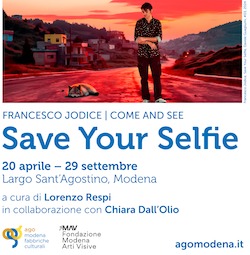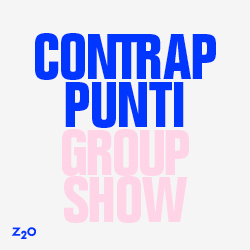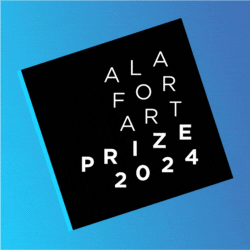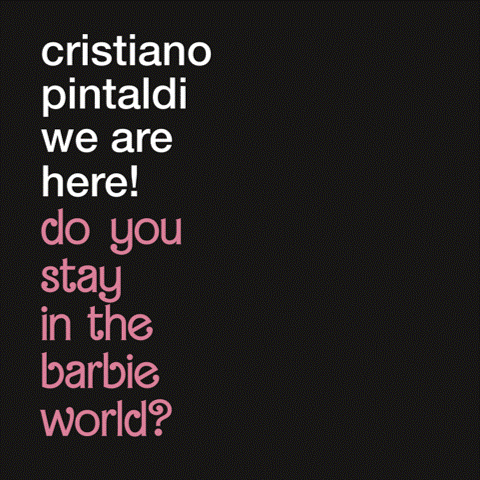
English text below —
Giunge quest’anno alla sue terza edizione la sezione Disegni di Artissima, sezione che all’interno del ricchissimo palinsesto torinese sottolinea il ruolo nodale svolto dal disegno nello scenario artistico contemporaneo. Dall’essere inizialmente considerata una tecnica accessoria e (apparentemente) secondaria, il disegno pare oggi avere raggiunto uno statuto fondamentalmente autonomo, retaggio di una tradizione novecentesca e ancora prima ottocentesca, costituendo tra gli altri uno stimolante punto di riflessione per differenti artisti internazionali. Tale pratica risulta intimamente multidisciplinare e potenzialmente fluida: i suoi possibili significati e le sue ragioni risultano così eterogenee.
In questa occasione, ATPdiary ha intervistato il duo curatoriale del progetto composto da João Mourãu e Luis Silva, al fine di porre in evidenza caratteristiche e potenzialità del disegno, in relazione alla Fiera e ai suoi premi.
Valentina Bartalesi: Questa è la vostra terza esperienza di curatela della sezione di Disegni di Artissima. In quale maniera descrivereste l’essenza e il ruolo di questo medium nella produzione artistica attuale? Che status ha raggiunto tale pratica? Pensate che essa rappresenti un’opera d’arte a sé stante oppure un’entità profondamente coinvolta con altri lavori o altre forme di sperimentazione?
João Mourão & Luis Silva: Il ruolo del disegno nella produzione artistica contemporanea è il medesimo di quello posseduto da ogni altro media. Esso non risulta né di maggior né di minor valore rispetto ad altre forme d’arte quali pittura, video-art, scultura, fotografia, installazione o performance… E’ una delle possibilità espressive disponibile agli artisti. Alcuni autori scelgono di utilizzare solo uno fra questi media, mentre altri s’interessano ad un particolare medium (o ad alcuni media) in relazione all’opera che stanno sviluppando. In questo modo il disegno risulta un’opera d’arte in sé e per sé. Ad ogni modo, ciò non significa che le sue possibilità finiscano qui: il disegno può essere diverse cose allo stesso tempo ed i suoi limiti sono definiti unicamente dalle intenzioni dell’artista.



VB: Quest’anno la Sezione Disegni ospiterà 21 artisti rappresentati da 21 gallerie – italiane e straniere. Secondo quali criteri avete selezionato gli artisti ospitati? Ad esempio, avete preferito quegli artisti che si avvalgono del medium del disegno rispetto ad altre tecniche artistiche (come potrebbero essere pittura e scultura)? O avete piuttosto preso in considerazioni le caratteristiche di ogni singolo lavoro?
JM & LS: I criteri adottati sono stati differenti per ambiti e obiettivi. Da un lato abbiamo scelto le opere in relazione al nostro interesse, selezionando ciò che nel campo del Disegno abbiamo ritenuto essere rilevante. In seguito abbiamo dovuto considerare la necessità della Fiera in termini di profilatura delle gallerie ospitate e di come esse potessero risultare interessanti per i collezionisti che partecipano alla fiera. Da ultimo è importante per noi pensare in termini di politiche di rappresentazione ed essere coscienti degli eventuali squilibri di età, genere e luogo di origine, che potrebbero verificarsi, il che non è sempre facile nel contesto di una fiera d’arte. Tutti questi criteri molto diversi interagiscono tra loro e funzionano alla stregua di un puzzle che dobbiamo risolvere. Il risultato è la sezione stessa.


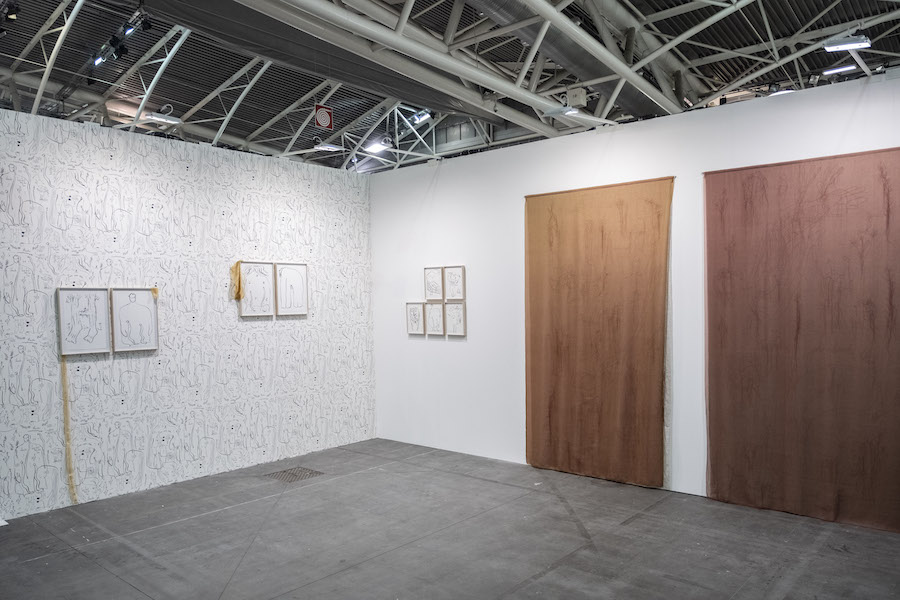
VB: Che relazione esiste tra i giovani artisti e la pratica del disegno, ammesso che essa esista? Pensate che la sezione Disegni possa stimolare un dibattito o una riflessione sull’essere artisti oggigiorno?
JM & LS: Gli artisti esplorano il medium del disegno indipendentemente dalla loro età. Come abbiamo già anticipato, è importante per noi mettere in evidenza tale punto. Questa sezione, rappresentando una prospettiva di come gli artisti contemporanei esplorano il disegno, è certamente una riflessione su cosa significhi essere un artista oggi: come gli artisti realizzano i lavori e quali narrazioni e punti di vista esprimono nella loro pratica.
VB: Qual è il ruolo della sezione Disegni all’interno di una Fiera come Artissima? I collezionisti risultano sensibili a tale pratica?
JM & LS: Uno dei ruoli principali della sezione, nel contesto di una fiera d’arte, è quello di sensibilizzare il disegno come mezzo pertinente da un lato e, in secondo luogo ,quello di incoraggiare lo sviluppo di collezioni d’arte contemporanea sia specializzate nel disegno, sia prive di tale specificità , ma egualmente attente al disegno come fanno con gli altri media.
VB: Infine, potreste parlarmi dei Premi previsti per questa Sezione?
JM & LS: È molto difficile per noi parlare del premio, dal momento che non siamo neutrali. Siamo noi che selezioniamo le gallerie e gli artisti, quindi cerchiamo il più possibile di mantenere le distanze in modo da non influenzare la giuria e il risultato del premio.
—
DISEGNI
MERCEDES AZPILICUETA, NOGUERAS BLANCHARD Barcelona, Madrid – FRANCESCO BAROCCO, NORMA MANGIONE Torino – JOHN BOCK, GIÒ MARCONI Milano – ALIGHIERO BOETTI, DEP ART Milano – TERESA BURGA, BARBARA THUMM Berlin – DIOGO EVANGELISTA, FRANCISCO FINO Lisbon – KATHARINA GROSSE, NÄCHST ST. STEPHAN ROSEMARIE SCHWARZWÄLDER Vienna – SHEROANAWE HAKIHIIWE, ABRA Caracas – WAQAS KHAN, SABRINA AMRANI Madrid – GIOVANNI KRONENBERG, RENATA FABBRI Milano – CHRISTIANE LÖHR, TUCCI RUSSO Torre Pellice, Torino – ANNA MARIA MAIOLINO, RAFFAELLA CORTESE Milano – ANA MANSO, UMBERTO DI MARINO Napoli – BRUNO MUNARI, MAURIZIO CORRAINI Mantova – OTOBONG NKANGA, LUMEN TRAVO Amsterdam – NICOLA PECORARO, GIANLUCACOLLICA Catania – ADAM PENDLETON, PEDRO CERA Lisbon – JOSÉ MIGUEL PEREÑÍGUEZ, LUIS ADELANTADO Valencia, Mexico City – MARIO SCHIFANO, IN ARCO Torino – ACHRAF TOULOUB, PLAN B Berlin, Cluj – SANDRA VÁSQUEZ DE LA HORRA, SENDA Barcelona


#ArtissimaLive | DISEGNI – Conversation con João Mourãu e Luis Silva
This year Artissima 2019 will host the 3rd edition of the Drawing’s section, restating the fundamental rule concerning the medium inside the contemporary art scenario. From being an accessory and (apparently) secondary technique, nowadays this medium has reached an autonomous status and a prominent position in the poetic of several international artists. Indeed, drawing is intimately multidisciplinary and fluid: its significance and its reasons can be deeply heterogeneous. On this occasion, the editorial staff of ATP diary has interviewed the curatorial duo composed by João Mourãu and Luis Silva to examine the peculiar characteristics, potentialities and expectations of the drawing in relation to the Fair and to its awards.
Valentina Bartalesi: This is your third curatorship for the Disegni’s (Drawing) section at Artissima Fair 2019. In which way do you describe the essence and the role of drawing inside contemporary art production? What is the status of this practice nowadays? Do you think it is a free-standing work of art or it is something deeply involved with other works and other forms of experimentations?
João Mourão & Luis Silva: Drawing’s role within contemporary art production is the same as any other medium’s role. It is neither less nor more important than painting, video, sculpture, photography, installation, performance, etc. It is one of the many expressive possibities avalibale to contemporary artists. Some choose to use just one of these media while other pick and choose the media according to the needs of the work they are developing. In that way it is a drawing is a work of art in and of itself. However, this does not mean that its possibilities end here. It can be many things at the same time and its limits are only defined by the artist’s intentions.
VB: This year the section will host almost 21 artists represented by 21 galleries – Italian and foreign ones. According to which criteria do you choose the artists? For example, do you prefer the artists who chiefly use this peculiar medium rather than other media (such as sculpture or painting)? Or do you consider the characteristics of each work?
JO & LS: The criteria are many and vary in scope and purpose. On one hand we were choose according to our own interests and to what we find relevant in the field of drawing. Then we also need to take into consideration the needs of the fair in terms of the profile of the galleries they want to show and how they may be relevant for the profile of collectors that come to the fair. Finally it is important for us to think in terms of politics of representation, and be mindful of any age, gender and places of origin imbalances that may occur, which is not always easy in the context of an art fair. All these very different criteria interact with each other and function almost as a jigsaw puzzle that we have to solve. The result is the section.



VB: Which kind of relationship exists – if it does – between young artists and the drawing practice? Do you think this specific Section of the Fair can stimulate any dialogue or debate around being an artist nowadays?
JO & LS: Artists explore drawing as a medium regardless of their age. As we mentioned before it is important for us to make that explicit. This section, being a perspective into how contemporary artists are exploring drawing, is of course a reflection on what it means to be an artist today: how artists make work and what narratives and points of view they express within their practice.
VB: What is the Drawing’s Section role inside an important Art Fair such as the Artissima? Are current collectors “sensitive” and attentive to this peculiar kind of medium?
JO & LS: One of the main roles of the section, within the context of an art fair, is to bring awareness to drawing as a relevant medium on one hand and to encourage the development of contemporary art collection which are drawing specific or when they don’t have that specificity that they pay equal attention to drawing as they do to other media.
VB: At last, could you tell me something about the prizes planned for this section?
JO & LS: It is very difficult for us to talk about the prize, since we are not neutral. We are the ones who select the galleries and the artists so we try as much as possible as to keep our distance so we don’t influence the juri and the outcome of the prize.










